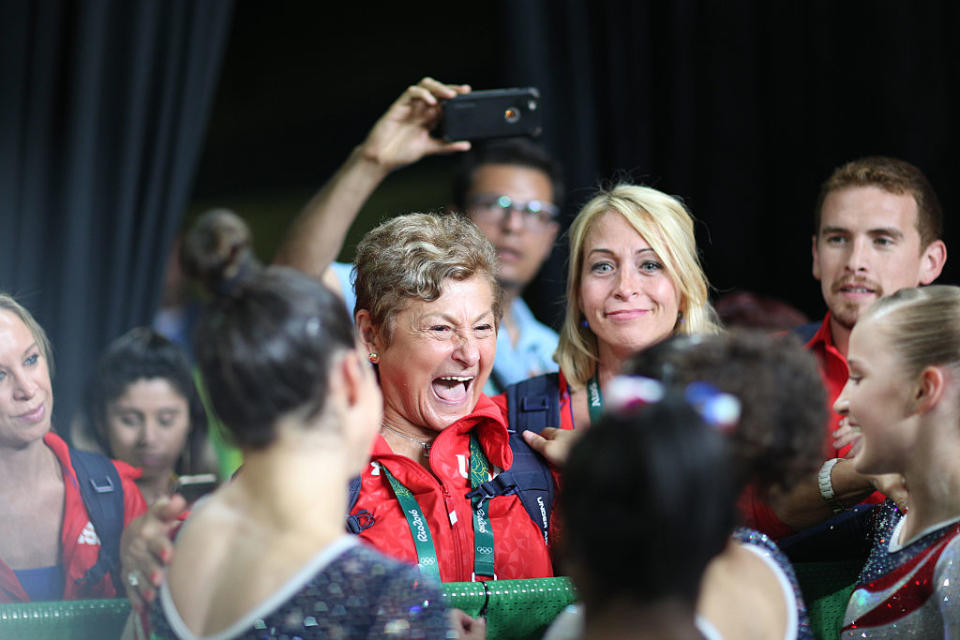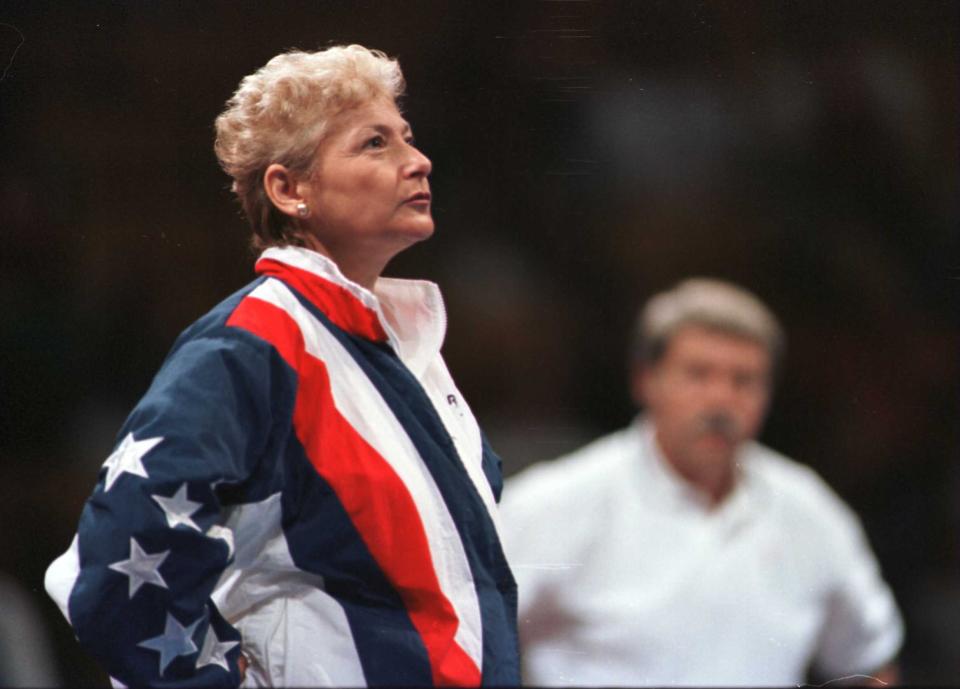The history of the Karolyi gymnastics coaching legacy
Medal count | Olympic schedule | Olympic news
Marta Karolyi is just days from retirement – two weeks from her 74th birthday – but the U.S. women’s gymnastics program doesn’t need any absence to make the heart grow fonder than it already is.
All it takes is a trip down memory lane to understand why American gymnasts absolutely revere both Marta and her husband, Bela Karolyi. Over the course of nearly six decades, the two of them created a legacy that boasted some of the biggest names to have graced the Olympic mats. It is a complex tale of distinct coaching styles, partnered together and woven into history.
Other names have come and gone – Nadia Comaneci, Mary Lou Retton, Carly Patterson, Nastia Liukin, the Magnificent Seven, the Fierce Five – but the coaches who helped those talented women rise to international prominence remained constant.
The ultimate acknowledgement of everything the husband-wife duo has done, though, came in the name of the 2016 women’s team: the Final Five, specifically recognizing Marta’s final year as team coordinator.

But how did Bela and Marta even reach this point in their careers? And why was Marta so influential at the end of the Karolyis’ time atop the gymnastics world? History has the answer.
Marta and Bela met as college students in Romania and were married shortly after graduation in 1963. She was a former gymnast. He was a boxer and hammer thrower. And all it took was one protege to set their coaching careers in motion. That young, talented girl was Nadia Comaneci.
In 1976, the 14-year-old scored the first perfect 10 in the Montreal Games, tallying five medals and sending the Karolyi duo to the forefront of the sport’s coaching ranks. Bela was outspoken, garnering much of the coaching attention. Marta was quietly there, helping Comaneci and the other Romanian gymnasts make precise routine adjustments.
An emotional outburst and vocal criticism of the judging at the 1980 Moscow Olympics caused Bela Karolyi to fall out of favor with the Romanian Communist Party, spurring a move that would alter the couple’s career dramatically. The two defected on a trip to the United States in 1981 and Bela’s previous coaching work with Nadia soon drew the attention of a young Mary Lou Retton.
[Featured: Mary Lou Retton tells why the first prom she experienced was her daughter’s]
Mary Lou became their American superstar, winning the all-around gold in 1984 and further establishing Bela as the gregarious face of the sport.
“The phone was ringing off the hook,” Marta said in an interview with NBC. “Everybody wanted to sign up. They said, ‘I have a little one, she’s looking just like Mary Lou.’”
A flurry of activity followed: In one week the Karolyis went from just over 100 students to 1,500. They built their training ranch by hand, eventually expanding to 2,000 acres outside of Houston with gyms, animals, dorms and a log cabin. Bela was subsequently named head coach of the women’s team before the 1988 Games.
The American teams with Bela broke through a history of underwhelming finishes, but frustration with the individualized system lingered with the Karolyis. That’s when the power shifted, though, as Marta took over as head coach in 1996. Her change? A team-oriented approach, most noticeably seen by a two-week training camp ahead of the Atlanta Games.
That team won gold, with Marta engineering it in the background.
“Bela has always been kind of the forefront, he’s very charismatic,” said 1996 star Kerri Strug. “Marta’s always been more in the background … more even-keeled, which doesn’t make for as good of television, but coaches have a strong admiration for her.”
[Featured: The most terrifying day for Shawn Johnson]
Following the 1996 Olympics, the Karolyis retired from coaching, moved exclusively to their ranch and, in 1999, Bela was named national team coordinator. The U.S. promptly fell short of expectations at the next Olympics and tensions grew as coaches across the country resented his grueling training schedule. The U.S. program wanted a replacement.
Again, that replacement came from within the family: Marta.
Bela’s retirement reduced him to a role as trusted adviser, and Marta’s true talent as a leader finally shone through. A competitive, experienced coach, she brought diplomacy to the table as the program’s coordinator. The Karolyis’ dream of a centralized system? Finally attainable, as coaches embraced Marta’s ability to work together and encourage individual success through a team-first approach.

“What most people don’t realize is that Marta has always been the engine behind it,” Retton said.
When the power shifted and Bela took a step back, the Karolyis weren’t in the spotlight like they had been at the end of the 20th century. Instead, Marta continued to shape the women’s teams and gain the admiration of generations of gymnasts from their quiet Texas ranch.
Her success isn’t hard to find, it’s just a record book away. Since 2004, her squads have captured two golds and two silvers in Olympic team competitions – four of the country’s six best finishes in history. And the Final Five, with its apt choice of name, honored that in 2016.
“It’s kind of a scary thing for me to think about just because I’ve known nothing but USA Gymnastics with Marta,” 2008 standout Shawn Johnson told Yahoo Sports. “I think, truly, what is going to happen is Marta will forever continue – in the programming, the style, the way the sport and our program runs – and it’s just going to be someone filling her spot. I think that’s a testament to what she’s put in place because I don’t think that would normally happen.”
[Related: Simone Biles will continue to compete, but all the way to Tokyo 2020?]
Just before the Olympics, USA Gymnastics reached an agreement with the Karolyi family to purchase the Texas training facility. Nonetheless, Bela and Marta will still have their cabin and are expected to maintain a presence even in full retirement.
So where does USA Gymnastics go from here? The choice for a replacement appears to be down to two, Bela told Yahoo Sports last week. However, the foundation they’ve put in place – 60 years in the making – is destined to last, no matter what happens when Marta steps away for good.



